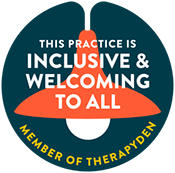Creating an Environment that Nurtures Mental Wellbeing
Have you ever noticed how much your surroundings shape your emotional state? The people you interact with, the communities you belong to, the media you consume, and the culture of your workplace all influence your mental and emotional health. Each of these elements contributes to the story you live every day. From a narrative therapy perspective, I often remind clients that they have the power to edit and reshape their stories. The environment you choose to cultivate becomes the backdrop for your personal growth, healing, and fulfillment.
Taking responsibility for your emotional well-being begins with recognizing that your mental health is, in many ways, in your own hands. You deserve to live in a space—both internal and external—that supports your best self.
Building an Environment to Thrive
If your goal is to feel balanced, fulfilled, and emotionally strong, consider the following areas for reflection and change:
1. Building Positive Social Connections
Surround yourself with relationships that make you feel supported and valued. Positive social connections can buffer against depression, anxiety, and burnout. From a cognitive-behavioral perspective, they also provide opportunities to challenge negative thought patterns through shared perspective and encouragement. When you connect with compassionate people, you are reminded of your own worth and resilience.
In my practice, I help clients explore the stories they tell about belonging and connection. Many discover that by shifting the narrative—from “I am alone” to “I am learning to build trust”—they open themselves to deeper, more meaningful relationships.
2. Removing Negative Influences
Just as positivity strengthens you, negativity can deplete you. A toxic workplace, strained family dynamics, or excessive time spent on social media may be shaping your emotional experience more than you realize. From a mindfulness standpoint, awareness is the first step. Notice what triggers tension, fatigue, or self-doubt, and then create boundaries that protect your peace.
In positive psychology, the goal is not to avoid discomfort entirely, but to intentionally choose experiences that promote growth and gratitude. Each time you remove a harmful influence, you make space for something that helps you thrive.
3. Taking Practical, Compassionate Steps
This process does not unfold overnight. Real, lasting change happens through consistent effort and self-compassion. You might start by:
-
Building supportive networks through friends, family, or community involvement
-
Reducing your exposure to toxic environments when possible
-
Seeking therapy if emotional stressors begin to feel overwhelming
In cognitive-behavioral therapy, we view these small, intentional actions as ways of strengthening new, healthy patterns of thought and behavior. Each choice becomes a statement of self-respect and agency.
Creating the Story You Want to Live
The environments you choose and the relationships you nurture become chapters in your life story. As you work toward creating a space that aligns with your values and goals, remember that you are the author of that story. Mindfulness helps you stay grounded in the present, while positive psychology encourages you to focus on what is working well rather than what is missing.
Begin Your Next Chapter with Support
If you are ready to build a healthier, more supportive environment for yourself, I am here to help. In therapy, I guide clients through life transitions, self-discovery, and personal growth using an integrative approach that combines narrative therapy, CBT, mindfulness, and positive psychology. Together, we can identify what strengthens you, release what no longer serves you, and help you move toward the life you want to live.
You do not have to do this alone—book a session with me today and begin writing a new chapter grounded in balance, meaning, and hope.

